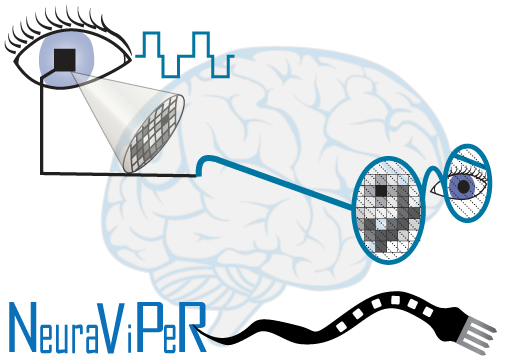Projects and Research in the BEMT Lab
In the BEMT group we are intrested in making microdevices which electrically interface with living cells and tissue. Such interfaces have a wide variety of biomedical applications ranging from from tissue engineering to biosensing, brain machine interfaces and electroceuticals. Different applications poses very different boundary conditions on the technology. While, for instance, neurostimulation relies on injection on extremely short pulses (typically 200 µs long) tissue engineering may benefit from pulses of seconds to minutes. To tailor devices to specific applications we explore a range of different materials and process technologies. The devices we develop range from the smallest intracortical probes (thinner than a human hair) to centimetre scale devices optimized to act as skin-patches.
Projects
 | ||
| Read more about what we work on for tissue engineering applications you find in our ERC funded project SPEEDER. | Read more about our work on intracortical probes in the press release for our most recent project NeuraViPeR or on the NeuraViPeR website. | Read more about our electroactive coatings (IrOx, PEDOT, nanoPt) here, as well as in our previous BrainLinks-BrainTools funded project BioEPIC. |
Methods
Electrodes in contact with tissue forms an electrochemical interface, where ionic current in the biological liquid are exchanged to electrons in the electrical circuitry. Over the years we have learnt a lot about microelectrode charactherization.
Electrochemical charactherization
Typical methods that we use to estimate the performance of our bioelectronic electrodes are:
- Cyclic voltammetry
- Electrochemical Impedance Spectroscopy (EIS)
- Pulse Test (Charge Injection test / Pulsing stress test)
- Electrochemical Quartz Crystal Microbalance (EQCM) analysis
Microelectrode coating and fabrication
In the IMTEK cleanroom we have access to oreactive sputtering and evaporation, which we use to form the base metallization of our devices. A strong focus in our group has been development and coating of microelectrodes to improve their sensing, recording or charge injection performance. For this we have worked with a variety of techniques. Electrodeposition of electroactive materials is one of our strong suits, in particular:
- Electrodeposition of PEDOT/PSS
- Electroplating of NanoPt
In addition, we employ vapor phase polymerization (VPP) of PEDOT for efficiently coating larger non-conducting substrates, as well as casting or printing PEDOT dispersion which functions as a rapid cleanroom-free production technique for thick coatings.
Biofunctionalization tests
One of our specialization has been development of biofunctionalized electrode materials which can elute drugs into tissue once implanted. For this we have developed special drug detection protocols using for instance
- High Performance Liquid Chromatography (HPLC)
- Fluorometry
- UV-VIS
Biocompatibility tests
Another typical validation method is to use cell lines as a first biocompatibility/biofunctionality test. We currently run our own Biosafety level S1 cell culture factiliy where we routinely do toxicity tests using various cell lines, from L929 fibroblasts, to SH-SY5Y neurablastoma cells and various skin cell cultures. Infrastructure in our S1 lab:
- Fluoresence microscopy
- TimeLapse microscopy (CO2 incubated)
- CO2 incubators
- Swing-out centrifuge
- Cryo-tanks

